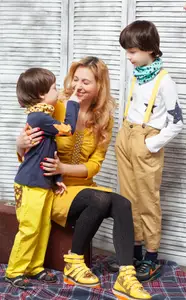How to apply positive child discipline methods

How to apply positive child discipline methods:

Lately, I’ve been feeling stressed with my 4-year-old son because of the way he’s been behaving. One hour, he was acting normally, and the other hour, he was throwing tantrums for no reason. I’ve always opted for a respectful discipline, but there were a few things I didn’t quite understand about his attitude, like this transition from calm behaviour to outbursts. It was getting stressful, and I wanted to understand him. Fortunately, I found a book that changed my vision of the discipline. It’s an excellent book, and it’s mine. Otherwise, I wouldn’t be writing an article about it.
I highly recommend it if you want to discipline your children without drama and regain calm. In the following article, I’ll summarize what struck me most about the book.
You’re a mirror to your kid:

First of all, what does discipline mean to you? How do you react when your child gets angry? Do you get angry and impulsive yourself?
According to Dr. Daniel J. Siegel and Tina Payne Bryson, authors of the book No-Drama Discipline, you’re mistaken if you think of discipline as treating your child like a prisoner or a recipient of punishment because you tell yourself that’s what you should do. According to the authors, discipline means teaching and learning what to do. You need to see your child as a pupil. If you’re constantly controlling, you’re not listening to their needs. Being receptive to your child’s needs is better than being impulsive and rigid.
Rethink the way you discipline:

There are three questions to ask yourself when your child throws a tantrum (instead of reacting by yelling)
1- What for?
2- Why?
3- What?
4- How?
1- Why has my child reacted this way?
Example: We realize he didn’t want his toy taken away.
2- What lesson would you like to teach your child at this precise moment?
Example: A message about respect, the importance of sharing with others, politeness, and kindness.
3- What’s the best way to get the message across?
Answer: Connecting with him to show him that you’re sensitive to his feelings and that he has your full attention.
When you recognize his emotions and are receptive to them, you teach him a valuable lesson for his future.
Understand the child’s brain:

A child’s brain = a house under construction
When your child throws tantrums, throws toys to the ground, or destroys his brother’s Legos, remember that the lower part of his brain is making him do it.
The upper part of the brain develops slowly. It takes a long time, ending around age 25.
The upper part of the brain is responsible for:
- Decision-making and planning
- Emotional and physical regulation
- Discernment
- Flexibility and adaptability
- Empathy
- Morality
The authors want parents to understand that the upper brain is receptive while the lower brain is reactive. By giving our children the opportunity to exercise their brains, we strengthen and develop them. By asking them questions about themselves, they build lucidity and empathy.
Limits always exist:
The authors discuss reassurance, validation, and listening without neglecting respect for limits. You shouldn’t think that giving your child love and attention is spoiling them. Far from it, connection is not synonymous with permissibility.
What’s the best way to communicate when your child is out of control and in crisis?
Step 1: Comfort your child:
First, connect with your child in crisis using comforting gestures, such as giving them attention and affection. Position yourself below eye level and adopt a relaxed posture. You need to be open and affectionate, and this should also be reflected in your nonverbal behaviour.
Step 2: Validate her emotions:
After you’ve hugged her and comforted her with your words and presence, identify the emotion that she’s feeling. By doing so, you’re showing her that you validate her experience.
Ex: “That really made you sad.
Test your observation skills and communicate.
Step 3: Listen:
Remember, when your children are in crisis, this is not the time to lecture them. Appealing to reason is not a good method in this situation. By making room for listening, you show them that what they say and feel is essential. Give them room to express themselves and say what’s on their minds.
There’s a lot in this book that I couldn’t discuss in this article, but it’s well worth reading or even borrowing from a library. The authors have gone to great lengths to explain how it’s done.
Ressources:
- No-Drama Discipline: The Whole-Brain Way to Calm the Chaos and Nurture Your Child’s Developing Mind by Daniel J. Siegel, MD and Tyna Payne Bryson, PhD


